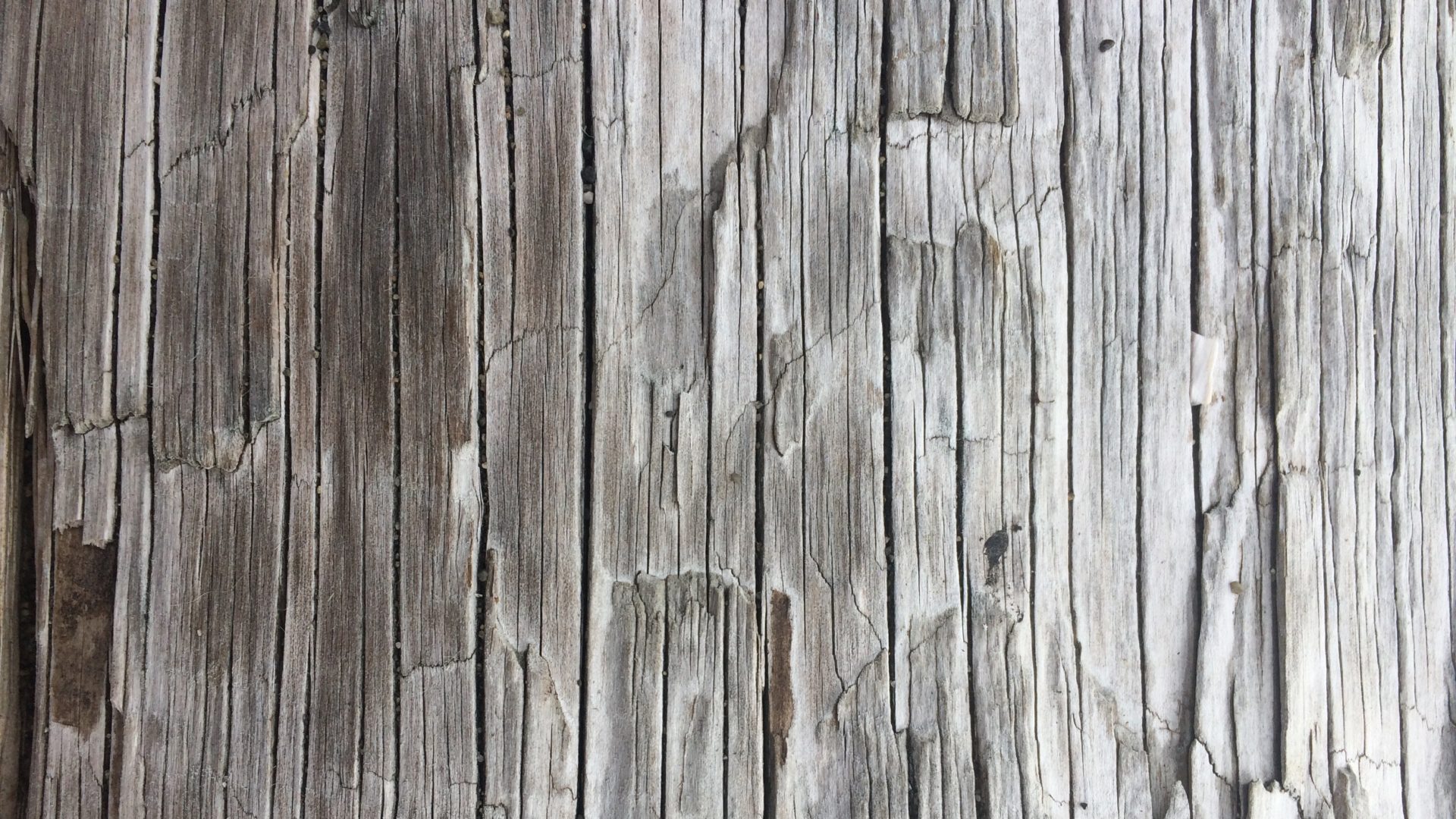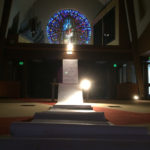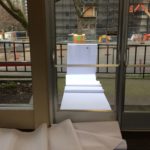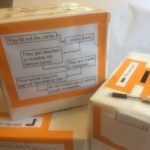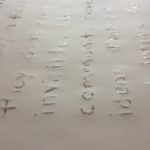Artist’s Statement
I like to work with ordinary materials the inherent properties of which inform and reiterate the conceptual underpinnings of a given project. In all my work, I attempt to design processes and constraints that require me to labor longer than my initial inspiration or enthusiasm or outrage hold out. It is only after this something new can happen and I am changed by the work. Collaborating with strangers is unnerving, and writing with lemon juice is arduous: like the effort to see one’s own privilege or to make one’s own vulnerability seen. It is also basic, a little magical, and imperfect. Like human connection.
Dedication
This work is indebted and dedicated to the many people who entrusted their words to my care…guests and residents at the Compass First Presbyterian Shelter in Seattle and the Interfaith Works Overnight Shelter in Olympia, and those passing through the Interfaith Works Community Care Center and the Saturday Warming Center. Thanks also to the staff of these places and others who were generous with their time.
Project Description
Invisible Ink: Homeless was a durational project of embodied listening.
I spent months visiting with, talking with and asking homeless members of our community to put their thoughts down in writing. They finished statements such as “When I look at myself I see…,” “I want people to see that I…,” or wrote without a prompt about whatever was on their mind. I was—am—moved by their candor and generosity. They are at the heart of this project.
I carefully transcribed their words in lemon juice (homemade invisible ink) on an uncut scroll of butcher paper, filling hundreds of feet with surprising, blunt, kind, sad, funny, stirring messages. It is a slow, contemplative, tender process of acknowledging and abiding with the truth that there is no difference but a home between me and a homeless person.
Visitors to the installation—which was located in the main worship space of a church in whose basement there is an emergency homeless shelter—were invited to help reveal the words using a household iron. When heated up, the words appear. It isn’t just that sugar in the lemon juice caramelizes…browns. It is more profound than that. There is a structural alteration. Citric acid breaks down the pure white fibers of the butcher paper, making it more vulnerable, making it possible to see the invisible.
This process represents the care, effort and vulnerability required to overcome personal and institutional obstacles in order to see and address the needs of community members who live without adequate shelter and who are often silenced and ignored. It is about seeing people as people.
More simply, this is just about taking time to listen to what people have to say.
